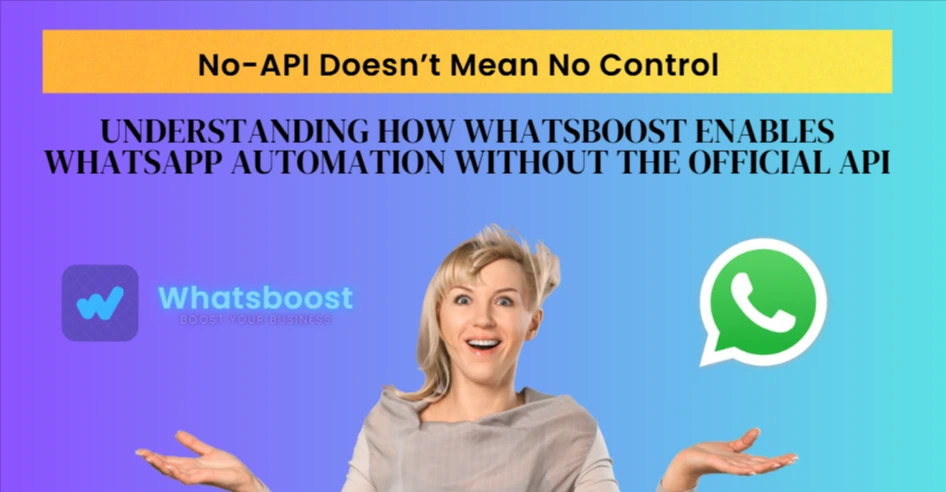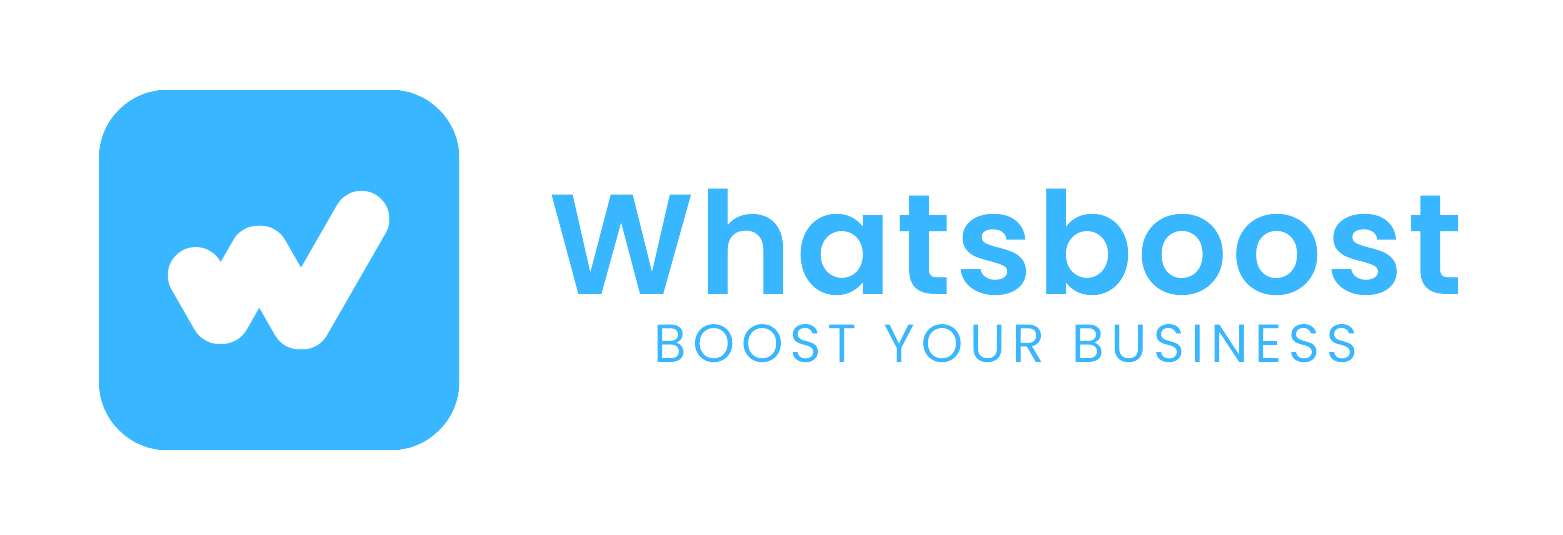
No-API Doesn’t Mean No Control: Understanding How WhatsBoost Enables WhatsApp Automation Without the Official API
You don’t need Meta’s API to automate WhatsApp effectively. This article explains how WhatsBoost replicates core automation features—like message triggers, routing, and CRM integration—without approval delays or technical complexity.
For small businesses and independent professionals, WhatsApp is more than just a messaging app—it’s a lifeline to clients, leads, and communities. But as your business grows, so does the need to automate communication. That’s where things can get complicated.
Many assume that to automate WhatsApp, you must go through Meta’s official Business API. But for small teams without technical resources or time to navigate approvals, this can feel like a locked door. Fortunately, there’s another path—one that doesn’t require API access but still offers powerful automation capabilities.
In this article, we’ll explore how tools like WhatsBoost enable WhatsApp automation without relying on Meta’s API. We’ll break down the technical logic behind no-API automation, compare it to traditional API-based methods, and help you understand how to make informed decisions for your business.
🧩 What Does “No-API” Actually Mean?
When we say “no-API,” we’re referring to automation tools that don’t rely on Meta’s official WhatsApp Business API. Instead, they operate through alternative methods—typically by integrating with WhatsApp Web, the browser-based version of the app.
This approach avoids the need for:
- Business verification through Meta
- Hosting infrastructure or server-side development
- Pre-approved message templates
- Per-message costs imposed by Meta
But does skipping the API mean giving up control or functionality? Not necessarily.
🔍 How WhatsBoost Works Without the API
WhatsBoost is a browser-based connector that interacts with your WhatsApp Web session. It listens for specific triggers—like a new lead from a form, a keyword in a message, or a CRM update—and responds accordingly.
Here’s how it replicates core API functionalities:
1. Trigger-Based Messaging
Just like an API can send messages when an event occurs, WhatsBoost uses browser-based logic to do the same. For example:
- A new lead fills out a form on your website.
- WhatsBoost detects the submission and sends a personalized WhatsApp message.
- The lead’s details are logged in a connected Google Sheet or CRM.
This is achieved using webhook integrations and browser automation, not server-side API calls.
2. Smart Routing
In API-based systems, messages can be routed to different agents or departments. WhatsBoost achieves similar outcomes by analyzing message content and applying keyword-based logic.
For instance:
- A message containing “pricing” triggers an automated response with your rate card.
- A message with “support” is flagged and routed to a team member’s WhatsApp account.
3. Multi-Account Management
While Meta’s API typically supports one number per instance, WhatsBoost allows users to connect up to three WhatsApp accounts in a single dashboard. This is particularly useful for small teams managing multiple brands or service lines.
4. Data Handling and Security
Since WhatsBoost operates through your browser, data is not stored on external servers. This local execution model reduces reliance on third-party data storage and aligns with privacy-conscious practices. However, users must still ensure they comply with WhatsApp’s terms of service and avoid spammy behavior.
🧪 Comparing No-API Tools with API-Based Automation
| Capability | Meta WhatsApp Business API | WhatsBoost (No-API) |
|---|---|---|
| Requires Meta Approval | ✅ Yes | ❌ No |
| Coding/Developer Needed | ✅ Yes | ❌ No |
| Setup Time | ⏳ Days to weeks | ⚡ Minutes |
| Message Triggers | ✅ Yes | ✅ Yes |
| Message Templates | ✅ Required | ❌ Not required |
| Multi-Device Support | ❌ No | ✅ Up to 3 accounts |
| CRM & Webhook Integration | ✅ Yes | ✅ Yes |
| Per-Message Cost | 💰 Yes | 🚫 No |
| Ideal For | Enterprises, large teams | SMEs, coaches, solopreneurs |
While the API offers enterprise-grade scalability and compliance, it’s often more than what a small business needs—or can afford. WhatsBoost provides a leaner, more accessible alternative that covers the essential automation needs without the overhead.
🧠 When to Consider a No-API Solution
No-API tools like WhatsBoost are particularly well-suited for:
- Coaches and educators who want to send session reminders or onboarding messages.
- Freelancers and consultants who need to follow up with leads from social media or landing pages.
- Service providers managing customer inquiries, bookings, or support via WhatsApp.
- Small teams that want to share WhatsApp access across multiple devices or departments.
These users often prioritize speed, simplicity, and affordability over deep customization or enterprise-level compliance.
⚠️ Considerations and Best Practices
While no-API tools offer flexibility, it’s important to use them responsibly:
- Avoid spam: Only message users who have opted in or initiated contact.
- Stay compliant: Even without the API, you’re still subject to WhatsApp’s terms of service.
- Monitor performance: Use tools that offer basic analytics or integrate with your CRM to track engagement.
Remember, automation is a tool—not a replacement for authentic, human-centered communication.
🧭 Final Thoughts: Rethinking Control in WhatsApp Automation
The idea that “no API means no control” is outdated. For small businesses and independent professionals, control isn’t about owning a server or writing code—it’s about having the freedom to act quickly, communicate effectively, and adapt without friction.
WhatsBoost and similar no-API tools are part of a growing movement to democratize automation. They offer a practical, powerful alternative to traditional API setups—one that aligns with the needs, budgets, and realities of modern small businesses.
By understanding how these tools work, you can make informed decisions about your communication strategy—and choose the path that gives you the most control over your customer relationships.
